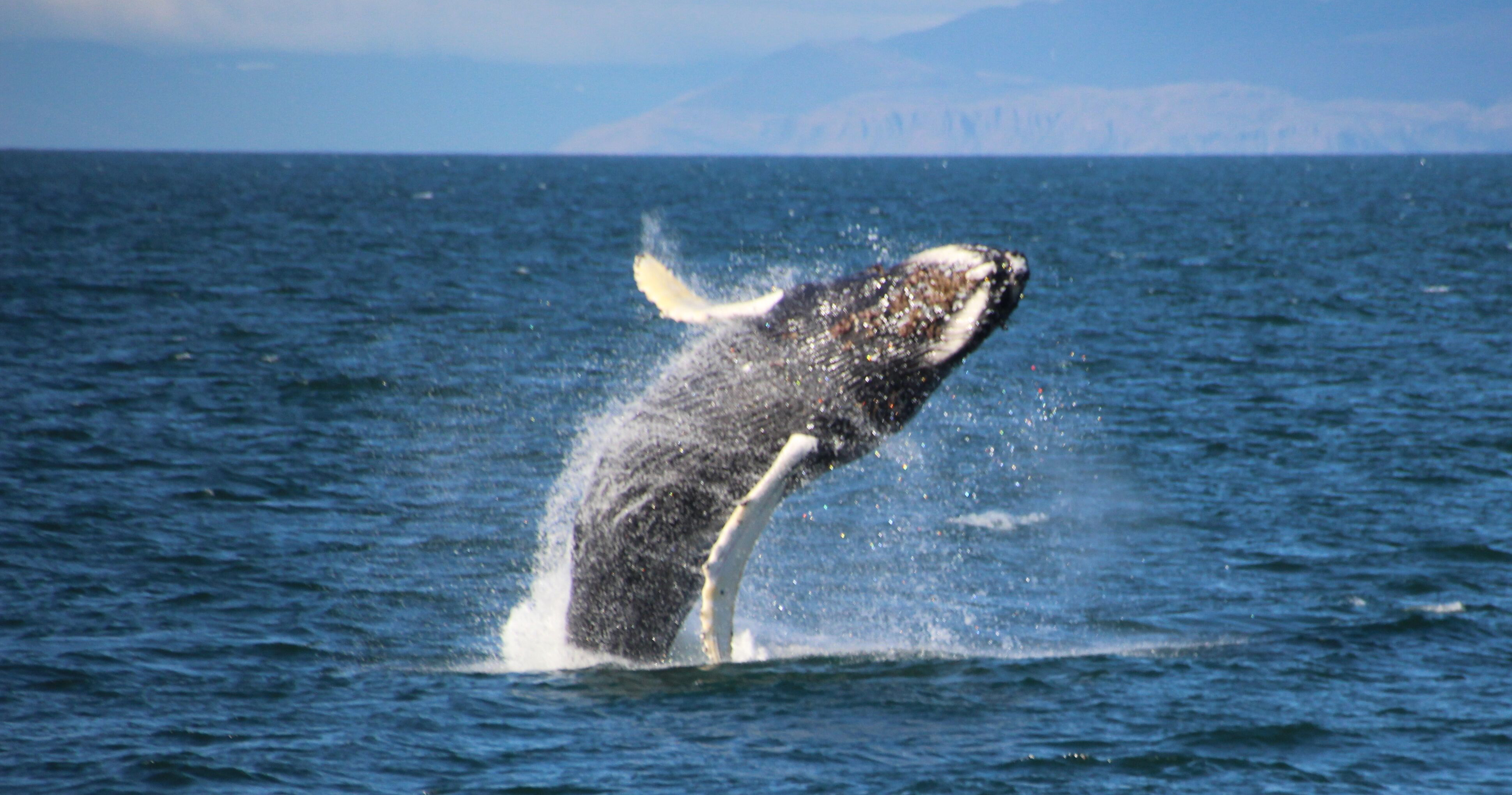Whale Watching: Akureyri
Iceland
Available Every Day
With a total of 23 different whale species to potentially encounter in Icelandic waters, it is not difficult to understand why Iceland is one of the world's top ten destinations for whale watching. Whale watching first became a big thing in Iceland in 1991. The nutrient rich waters are full of phytoplankton, which is found at the sea's surface and gains energy from the sun - the first and most fundamental link in the whale food chain. Whale watching companies within Iceland are continually working together to enforce voluntary guidelines and to develop a code of conduct to help minimise the impacts of vessels and to ensure the sustainability of the industry and conservation of the species.

Among those species regularly spotted in Icelandic waters include minke, humpback, blue, fin, sei, sperm, orca and pilot. White beaked dolphins and harbour porpoises are also often seen, meanwhile, it is not unheard of to spy bottlenose whales either.
Although whale sightings can occur in Iceland throughout the year, there are of course peak times and specific places for which are best to see them. Please see our Where to see Whales page for further details.
For orca sightings, the best place in Iceland for which to seek them out is the Snæfellsnes Peninsula. Situated 2-3 hours from Reykjavik,a journey to the Snæfellsnes Peninsula is manageable in a day by hire car, but also makes for a great overnight trip. For the pst few years large numbers of herring have congreated in the fjord here, which in turn has attracted large pods of orcas. The Winter months and early summer (May and June) have proved the best for sightings in the past, however, they can be seen at any point during the summer, both from the shore and boat. Other speices that are often spotted in these waters include sperm, minke, blue, fin, humpback, pilot and sei whales as well as white beaked dolphins.
In Reykjavik we commence our whale watching trips from Reykjavik harbour, sailing out into Faxafló Bay, from where the majority of whales spotted frequent the waters within a 15 km radius, many of which will often surface within a few feet of the boat. Icelandic waters encompass both the cold Arctic sea in the North as well as the warmer north Atlantic Ocean in the South. The combination of these two currents, the long summer daylight and the depth of Faxafló Bay at 20-30 metres, provides an excellent environment for attracting plankton and krill and consequently are favourable feeding areas for whales.
The species that are most often spotted around Reykjavik include humpbacks and minkes as well as white-beaked dolphins and harbour porpoises. If the conditions are favourable on the day, whale watchers may also be lucky enough to catch sightings of the majestic fin and sei whales and even the killer whale.
These insightful boat based trips are led by knowledgeable guides who will be on hand to answer questions and share their knowledge and experience to all those onboard. The guides will also be able to help passengers identify specific species, in particular the minke whale, recognisable by the unique markings on its dorsal fin. The acrobatic humpback whales are often spotted leaping clear out of the water - a fantastic photographic opportunity if ever there was one. Witnessing a blue whale would no doubt be an awesome experience, measuring up to 30 metres in length and with the heart the size of a car, these incredible animals can easily be identified from a distance by their spurting water blows, which can reach up to 9 metres.
These whale watching trips can also provide opportunities for encountering an array of bird species, including puffins, gannets, guillemots, cormorants, kittiwakes and Arctic terns. Puffins, who are resident in Iceland from April to September can frequently be observed on our whale watching trips and make for wonderful photo opportunities. During the summer months, when the puffin populations are high, trips include stopping nearby one of the many puffin islands, enabling passengers to get a closer look at these charismatic birds.
The favorable weather conditions and abundance of different whale species that frequent Northern Iceland's waters, make it one of the best Icelandic areas for whale watching. The sheltered bays of Skjálfandi and Eyjafjörður are not only home to a diversity of whale species, but are also enrobed by beautiful scenery and make for an enjoyable and serene boat ride on a warm summer's day. Furthermore, during the summer months this area plays host to a carnival of kittiwakes, who come here to breed.
Please note: Whale watching trips in Iceland are subject to weather conditions. On occasion, trips may be cancelled due to poor weather and if possible can be rescheduled within your itinerary. If it is not possible to reschedule your trip, you will be entitled to a full refund for the cancelled trip. Taking this into consideration, it is important that you can be flexible with your itinerary and allow some 'back-up days' in case you need to reschedule your trips.
North Iceland is in fact the start and end point of our 10 day East Greenland Voyages, with the Denmark Straits providing excellent opportunities to encounter blue whales, where an estimated 10% of the world's population are estimated to visit annually. Humpbacks and white beaked dolphins often accompany the ship enroute to Greenland. For further details about our East Greenland Voyages, please Click Here.